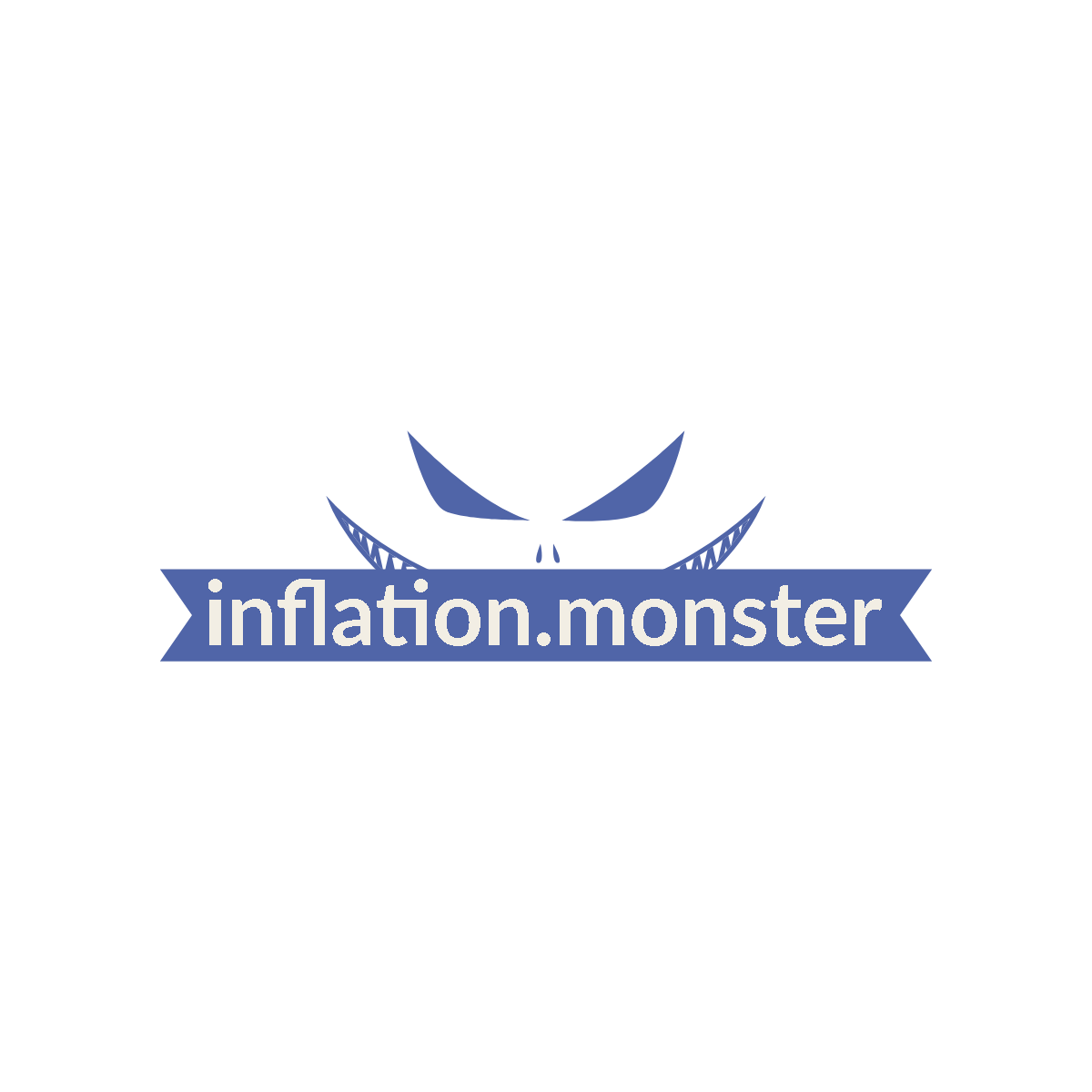Money supply and inflation have a deep-rooted connection that significantly impacts the economy. At Inflation.Monster, we are dedicated to unraveling the complexities of this relationship and providing you with the knowledge to navigate the financial landscape. Through our insights and expertise, we aim to equip you with a comprehensive understanding of the inflation monster and its effects on money and economics. Join us as we dive deep into the world of hard money, inflation, and the intricate connection between money supply and inflation.

Introduction
Welcome to our comprehensive article on the connection between money supply and inflation. In this article, we will delve into the intricacies of these two concepts and explore how they are intertwined in the economy. Understanding this relationship is crucial for individuals, businesses, and policymakers alike, as it allows us to make informed decisions about financial matters and navigate the ever-changing monetary landscape.
Understanding Money Supply
Definition of Money Supply
Money supply refers to the total amount of money in circulation within an economy at a given time. It encompasses all forms of money, including physical currency such as coins and banknotes, as well as various types of deposits and other liquid assets that can be easily converted into cash.
Types of Money Supply
There are several measures of money supply used by economists to quantify the different components of the total supply. The most commonly used classifications include M1, M2, and M3. M1 represents the narrowest definition of money supply and includes cash and other highly liquid assets. M2 encompasses M1 as well as short-term deposits and certain types of savings accounts, while M3 is the broadest measure, including M2 as well as longer-term deposits and financial instruments.
Importance of Money Supply in the Economy
Money supply plays a crucial role in the functioning of an economy. It affects economic activity, price levels, and inflation rates. An adequate money supply ensures that transactions can be carried out smoothly, facilitating trade and commerce. Conversely, a shortage of money supply can lead to liquidity issues, hampering economic growth.

Understanding Inflation
Definition of Inflation
Inflation refers to the sustained increase in the general price level of goods and services in an economy over a period of time. It erodes the purchasing power of money, as it takes more units of currency to buy the same goods and services. Inflation is typically measured by various price indices, such as the Consumer Price Index (CPI) and Producer Price Index (PPI).
Types of Inflation
There are different types of inflation, each with varying causes and impacts. Demand-pull inflation occurs when aggregate demand in the economy outpaces the available supply of goods and services, driving prices up. Cost-push inflation, on the other hand, arises from increased production costs, such as higher wages or raw material prices. It leads to a decrease in aggregate supply and ultimately puts upward pressure on prices. Additionally, built-in inflation results from expectations of future price increases, which can lead to wage and price spirals.
Causes of Inflation
Inflation can have multiple underlying causes, which can vary depending on the economic conditions and specific circumstances. Some common causes include increases in the money supply, which can lead to excess demand, as well as changes in production costs, such as raw material prices or labor costs. Government policies, such as fiscal deficits or excessive monetary stimulus, can also contribute to inflationary pressures. Understanding the causes of inflation is crucial for policymakers to implement effective measures to manage and control inflation rates.
The Quantity Theory of Money
Overview of the Quantity Theory of Money
The quantity theory of money posits a direct relationship between the quantity of money in circulation and the price level in an economy. It suggests that a change in the money supply will result in a corresponding change in the general price level over time. This theory is based on the assumption that the velocity of money, or the rate at which money changes hands in the economy, remains relatively stable.
Equation of Exchange
The quantity theory of money is often expressed through the equation of exchange, which states that the total value of goods and services exchanged in an economy (measured by the price level multiplied by the quantity of goods and services) is equal to the total monetary value of those goods and services (measured by the money supply multiplied by the velocity of money).
Implications of the Quantity Theory of Money
The quantity theory of money has important implications for inflation. It suggests that increases in the money supply, if not accompanied by proportional increases in output or productive capacity, will lead to higher prices. Conversely, a decrease in the money supply could theoretically lead to deflation. By understanding the implications of this theory, policymakers can take appropriate measures to manage the money supply and maintain price stability.

Monetary Theory of Inflation
Overview of the Monetary Theory of Inflation
The monetary theory of inflation focuses on the role of money supply in driving inflation. According to this theory, changes in the money supply directly impact the purchasing power of money, which in turn affects price levels. It places a strong emphasis on the relationship between monetary policy and inflation.
Role of Money Supply in the Monetary Theory of Inflation
In the monetary theory of inflation, an increase in the money supply is believed to cause inflation by increasing aggregate demand in the economy. As the money supply expands and consumers have more money to spend, they are willing to pay higher prices for goods and services. This excess demand puts upward pressure on prices.
Inflation Expectations
Inflation expectations also play a significant role in the monetary theory of inflation. If individuals and businesses anticipate higher future inflation rates, they may adjust their behavior accordingly. For example, workers may demand higher wages to compensate for expected increases in the cost of living, thereby contributing to inflationary pressures. Similarly, businesses may increase prices in anticipation of rising production costs or to maintain profit margins.
Correlation Between Money Supply and Inflation
Historical Evidence of the Connection
There is a long-standing historical correlation between money supply and inflation. In many cases, periods of high money supply growth have been accompanied by elevated inflation rates. For example, during the 1970s, the rapid expansion of the money supply in the United States contributed to high inflation levels, commonly known as “stagflation.”
Monetary Policy Impact on Inflation
Monetary policy, which is determined by central banks, plays a crucial role in managing the money supply and controlling inflation. By adjusting interest rates, conducting open market operations, and setting reserve requirements, central banks can influence the money supply. Tightening monetary policy by reducing the money supply growth rate can help prevent or curb inflation, while loosening monetary policy can stimulate economic growth but may also increase inflationary pressures.
Limitations of the Money Supply-Inflation Relationship
While the connection between money supply and inflation is generally recognized, it is important to note that it is not a one-to-one relationship. Other factors, such as changes in production costs, market dynamics, and inflation expectations, can also influence price levels. Moreover, the transmission of monetary policy to inflation can vary depending on the effectiveness and timeliness of policy actions, as well as the overall economic environment.
Central Banks and Money Supply
Role of Central Banks
Central banks play a crucial role in managing the money supply and maintaining price stability. They are responsible for formulating and implementing monetary policy to support sustainable economic growth and control inflation. Central banks also serve as lenders of last resort and oversee the stability of the financial system.
Tools for Managing Money Supply
Central banks utilize various tools to manage the money supply. One such tool is open market operations, where central banks buy or sell government securities to influence the level of bank reserves and, consequently, the money supply. Adjusting interest rates is another commonly used tool, as changes in interest rates can influence borrowing costs and affect consumer and business spending.
Relationship between Central Banks and Inflation
Central banks closely monitor inflation rates and adjust monetary policy accordingly. Inflation targeting is a common framework employed by central banks, where a specific inflation rate or target range is set as a policy objective. By managing the money supply and influencing interest rates, central banks aim to achieve their inflation targets and promote price stability in the economy.
Inflationary Pressures and Money Supply
Factors Influencing Money Supply
Several factors can influence the money supply in an economy. These include monetary policy decisions by central banks, changes in commercial bank lending practices, government fiscal policies, and external factors such as international capital flows. Understanding these factors is crucial for assessing the potential impact on overall money supply growth and, consequently, inflation rates.
Demand-Pull Theory of Inflation
The demand-pull theory of inflation suggests that excess demand in the economy, typically fueled by increased consumer spending or government expenditures, leads to upward pressure on prices. If the money supply increases at a faster rate than the supply of goods and services, demand-pull inflation can occur.
Cost-Push Theory of Inflation
The cost-push theory of inflation posits that increases in production costs, such as wages, raw material prices, or taxes, can lead to higher prices for finished goods and services. These increased costs are then passed on to consumers, causing inflation. The money supply is indirectly affected by cost-push inflation, as businesses may need additional funds to cover higher costs, potentially leading to increased borrowing and money creation.
Hyperinflation and Money Supply
Definition of Hyperinflation
Hyperinflation is an extreme form of inflation characterized by rapid and out-of-control increases in prices. It often has severe economic and social consequences, as the value of money rapidly diminishes, eroding savings and disrupting economic stability. Hyperinflation is typically accompanied by a breakdown in the monetary system and a loss of confidence in the currency.
Role of Money Supply in Hyperinflation
The money supply plays a significant role in hyperinflationary episodes. Excessive increases in the money supply, often driven by government deficits or the financing of unsustainable spending, can lead to a loss in the value of the currency. As the money supply expands rapidly, it outpaces the growth in production and generates excess demand, driving prices to skyrocket.
Consequences of Hyperinflation
Hyperinflation can have devastating consequences for an economy and its citizens. It erodes savings and reduces the purchasing power of money, leading to a decline in living standards. It also creates economic and social instability, as businesses struggle to operate and individuals lose confidence in the financial system. Hyperinflationary episodes can take years or even decades to recover from, requiring significant monetary and fiscal reforms.
Conclusion
In conclusion, the connection between money supply and inflation is a fundamental aspect of economics. Understanding how changes in the money supply can impact price levels is crucial for individuals, businesses, and policymakers. By comprehending the intricacies of this relationship, we can make informed decisions, formulate effective monetary policies, and navigate the complexities of the financial landscape. As we continue to explore the mysteries behind inflation and its impact on money and economics, let us equip ourselves with knowledge to navigate the world of finance and maintain stability in our ever-changing economic environment.




